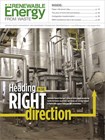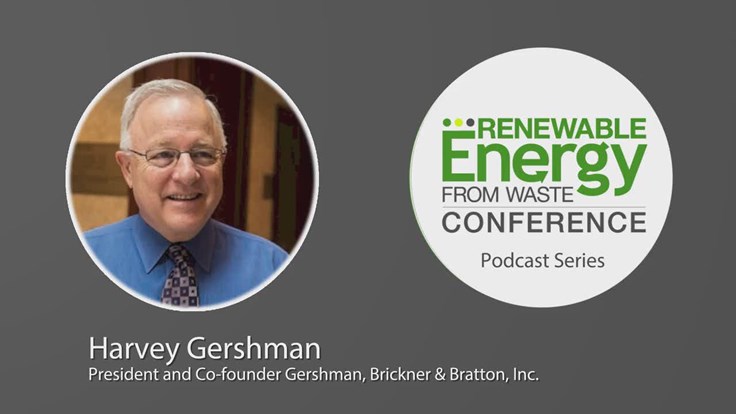"The competition just to get onto the shortlist in a few categories was fierce,” explains Patrick Serfass, ABC executive director. "We’re extremely excited to surprise the winners later this month, but all of these projects deserve recognition. We hope they will serve as models for future biogas project development."
At the Biogas Industry Awards and Dinner on Oct. 18, the ABC will award one Innovation of the Year, one Biogas Visionary, one Friend of the ABC and four Projects of the Year, one in each of the following categories: agricultural, municipal, institutional and merchant. New this year, the ABC will also recognize biogas systems that have been continuously operational for more than five years—seven have been operational for more than 10—with its new Longevity Award. There are more than 2,100 operational biogas systems in the U.S. today with the potential for over 11,000 new systems to be built.
Agricultural Project of the Year
Fair Oaks Dairy, Fair Oaks, Indiana
Fair Oaks Dairy's goals were to reduce the farm's odor, improve its nutrient management practices and generate renewable electricity/power from manure. The entire facility runs on cow and pig manure. The biogas is used partially during the milk and manufacturing process for energy, heat and electricity; the remainder is processed into renewable natural gas (RNG) to fuel the trucks that deliver the milk daily.
Real Farm Power, Hadley, Massachusetts
Real Farm Power is a strategic partnership that has scaled digester technology to smaller dairy farms, creating heat, valuable soil amendments and farm-generated electricity and providing infrastructure to recycle local food waste from Whole Foods supermarkets and Agri-Mark's West Springfield, Massachusetts, facility. The project provides enough energy to power Cabot's butter production and offsets the emissions from 3,970 cars on the road.
Synergy Biogas, Covington, New York
CH4 Biogas, Greenwich, Connecticut, formed Synergy Biogas and builds, owns and operates the biogas facility at Synergy Dairy that produces renewable energy from manure and substrate. The facility digests manure from about 2,000 milking cows at the dairy and food grade organic waste transported to the site. Biogas from the digester fuels genset with capacity to generate up to 1.4 megwatts of electricity.
Institutional Project of the Year
UW-Oshkosh Urban Dry Digester, Oshkosh, Wisconsin
This project started six years ago with initial goals to help the University of Wisconsin campus meet sustainability initiatives and bring specific digester technology new to North America to the university’s students and faculty. This project also has spurred creation of a Biogas Program at the UW campus which now encompasses 3 anaerobic digesters and a composting operation for faculty and student research.
Merchant Project of the Year
Central Ohio BioEnergy (COBE), Columbus, Ohio
Located in urban Columbus, Ohio, the project accepts a base-load of biosolids from the city while working with regional processors to also accept commercial and industrial food waste. It has both a public renewable CNG fueling station and on-site electricity generation so the COBE plant has the ability to produce electricity and/or CNG based on demand and the market value of the energy and related attributes (RINs and RECs).
Municipal Project of the Year
Waste Management-LA County Sanitation District’s Food Scrap-Wastewater Biogas System, Orange, California
Food waste is processed at the Waste Management facility in Orange, California and then the slurry is delivered to the 300 million gallon per day Joint Water Pollution Control Plant (JWPCP) located in Carson, California. This project processes approximately 65 to 85 tons per day.
Bailey Bioenergy Facility, Washington, DC, Washington, DC
DC Water’s project brought the Norwegian Cambi thermal hydrolysis process to the North American continent. The project can produce net 10 megwatts of electricity, providing clean, renewable energy to power about one-third of the plant’s immense energy needs.
Friend of the ABC
Ruckman Farm, Albany, Missouri
This project is designed to upgrade Smithfield Hog Production’s manure lagoons in Warsaw, North Carolina, into systems that both capture the gas and upgrade it into pipeline quality renewable natural gas (RNG). The RNG is injected into the pipeline where it’s sold to local customers and Duke Energy. At 115,000 tons per year of swine manure turning into almost 2 million DGEs (diesel-gallon equivalents), this is only the first ninth of the total planned size of this project.
Joseph Farms Covered Lagoon Digester, Atwater, California
At the heart of the system is a 45-million gallon covered lagoon digester. When 1 to 1.5 million gallons of flushed manure and cheese plant wastewater is pumped to this lagoon daily, up to 500,000 cubic feet of biogas is produced, which fuels 3 engine generators producing a total of 1.2 to 1.5 megawatts of continuous electricity. The electricity provides up to 75 percent of the annual energy requirements of the cheese plant.
Giacomini Dairy Digester, Point Reyes, California
The 2.5 million gallon covered lagoon digester is loaded daily with flushed manure from the 400-cow dairy along with cheese whey by-product from the adjacent cheese plant resulting in a 43-day hydraulic retention time. The digester produces around 30,000 cubic feet of biogas daily which fuels an 80-kilowatt cogeneration system. The project replaces over 50 percent of the overall farm's utility bill.
Innovation of the Year
Synergy Biogas
Sunnyside Farms
The farm has 3,300 total milking age cows and 1,400 800 to 1,200-pound heifers and raises forage crops on 5,000 acres of land. What makes this project special is the role it has played in conducting innovative research. For example, in 2013, Cornell graduate students Kristy Perano and Joe Usack conducted research on both utilizing waste heat from the biogas system to cool water and also the impact that cooled mats would have on the cows’ ability to produce milk during the dog days of summer.
HORSE AD25 by Impact Bioenergy
Impact Bioenergy, Seattle, scaled-down AD technology to modular, "hyperlocal" systems (25 to 175 tons per year) that minimize transportation, capital and labor costs. The HORSE microdigester (High-solids Organic-waste Recycling System with Electrical Output) is a containerized system that can be delivered to a brewery, restaurant or other facility, can process a wide range of organic materials and often uses all of the products on site, except when the liquid digestate “Brew Dew” is sold off site in growlers.




